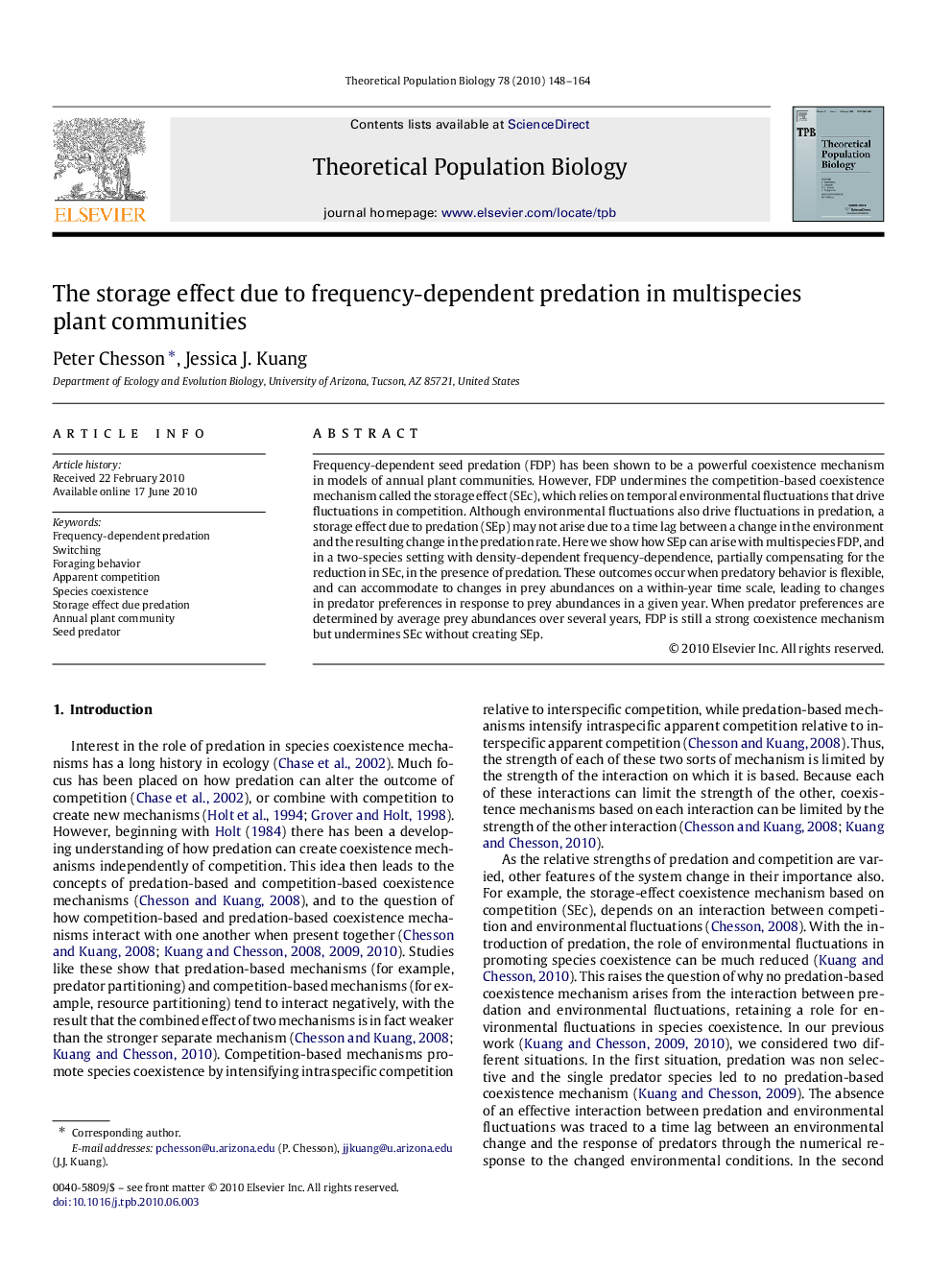| Article ID | Journal | Published Year | Pages | File Type |
|---|---|---|---|---|
| 6372468 | Theoretical Population Biology | 2010 | 17 Pages |
Frequency-dependent seed predation (FDP) has been shown to be a powerful coexistence mechanism in models of annual plant communities. However, FDP undermines the competition-based coexistence mechanism called the storage effect (SEc), which relies on temporal environmental fluctuations that drive fluctuations in competition. Although environmental fluctuations also drive fluctuations in predation, a storage effect due to predation (SEp) may not arise due to a time lag between a change in the environment and the resulting change in the predation rate. Here we show how SEp can arise with multispecies FDP, and in a two-species setting with density-dependent frequency-dependence, partially compensating for the reduction in SEc, in the presence of predation. These outcomes occur when predatory behavior is flexible, and can accommodate to changes in prey abundances on a within-year time scale, leading to changes in predator preferences in response to prey abundances in a given year. When predator preferences are determined by average prey abundances over several years, FDP is still a strong coexistence mechanism but undermines SEc without creating SEp.
